In a quiet residential district on the south bank of the Thames, hidden away from view, stands the original entrance to what was once a major tourist attraction.
The first of its kind, it was an incredible engineering masterpiece that is as important today as when it opened more than 170 years ago - although today it is for a very different reason, as it now transports 60,000 rail passengers a day underneath the River Thames.
The Thames Tunnel was probably Sir Marc Isambard Brunel’s most famous project, and was the first tunnel under a navigable river anywhere in the world.
But neither of those factors is what makes this structure so special. Rather, the methods used in its construction paved the way for the tunnel boring machines in use today - the Channel Tunnel, London Underground and Crossrail all owe their construction methods to Marc Brunel and his Thames Tunnel.
Today, 16 trains per hour transport approximately a third of all London Overground’s daily passengers through the quarter-of-a-mile tunnel from Rotherhithe to Wapping (southeast London).
The tunnel has been a vital part of the Overground since its inception in 2007, when the neglected East London Line was absorbed into the new service. And investment has continued ever since, with a £320 million capacity improvement under way to extend the Class 378s that run on the line from four-car to five-car formations, representing a 25% capacity increase.
But it’s no small task to maintain a 1,300 feet (396m) long, 35ft (11m) wide, 20ft (6m) high tunnel that is 75ft (23m) below the surface of a river, made even more complex because of its use by the railway.
It means that maintenance can only be carried out when the trains aren’t running.
The roof of the tunnel is only a few feet from the river water, and more than 3,000 litres of water have to be pumped out of the tunnel every day to keep it from flooding. The railway is closed every night for routine maintenance, although to upgrade the whole signalling system, as London Overground did in May 2014, the whole railway had to close for three days.
That was no doubt frustrating for the many passengers who hadn’t checked the timetable before rocking up at Rotherhithe station on a wet and miserable Saturday, only to find that there would be no trains and that they really should have remembered an umbrella.
But for a small group of people who knew why it was closed, the rain could not chase away the excitement. Because, for only the second time in 150 years, the general public was granted access to walk through the Thames Tunnel and discover the secrets of the overlooked ‘grandfather’ of tunnels.
Donning our blue plastic gloves (to prevent contamination from rat urine and faeces - a stark reminder that this is not a normal trip on the Tube), we head down into Rotherhithe station, and then down some makeshift steps to track level.
It is surreal to think that a river is above us, just a few feet away from where we stand, and even more so when you contemplate the thought processes that led to such an engineering triumph.
Early in the 19th century, additional crossings on the Thames were desperately needed, particularly around London Bridge and the East End, where the docks were rapidly expanding. Congestion on both the roads and the river itself meant that the only option was underground.
Many had tried, but each attempt failed because of the soft nature of the ground, which eventually led engineers to the conclusion that going under the river just wasn’t practical.
But Marc was not prepared to accept such a grim outlook, and set about developing new ways to dig a tunnel. By January 1818, he had teamed up with Lord Thomas Cochrane (a successful Napoleonic admiral), and had come up with the ingenious idea for a tunnelling shield… inspired by the most unlikely creature.
While working at Chatham Dockyard, he examined a piece of timber that had been removed from the keel of a ship, and found that it was riddled with holes. The culprit was said to have sunk more ships than enemy cannons, and yet was only nine inches in length.
The mollusc teredo navalis was a shipworm able to bore through the hardest oak. Having observed its methods, Brunel and Cochrane filed a patent for ‘forming drifts and tunnels underground’. The pair had designed the tunnelling shield - the forefather of the tunnel boring machine.
Just five years later, the plan was conceived to tunnel downstream from London Bridge (linking Rotherhithe and Wapping), setting in motion the project to construct a tunnel intended for foot passengers and eventually carriages.
Under Marc’s guidance, construction began in 1825. But there was a reason that attempts by others to tunnel under the Thames had failed… it was a risky and highly dangerous process.
Workers were frequently showered with water polluted by raw sewage. Miners’ oil lamps often ignited pockets of methane or marsh gas, producing lethal flames. By the end of the project, miners could only work two-hour shifts at a time before they collapsed from lack of fresh air. If a worker collapsed, he was simply replaced by a man who was still breathing.
Marc’s son, Isambard, directed much of the work, and he was well respected by the miners for tirelessly working alongside them, despite the awful conditions and on several occasions at the expense of his own health. He even saved several lives when leaks and breaches occurred during construction.
Nothing would deter the Brunels’ determination. During its early years, the project suffered from a lack of funding, and Marc needed to find a way to inspire new investors. So, on November 10 1827, Isambard organised a banquet in the new tunnel. It was described as the first underwater banquet in the world - solid silver settings, crystal glass and the band of the Coldstream guards set the scene, to prove to the guests that the tunnel was safe and worthwhile.
For us now, standing on the spot where the banquet took place, it’s not difficult to imagine the deafening sound that a brass band would have made in such an ‘echoey’ environment. And the plan worked - new investors were signed up and the project was able to continue.
But the elation was short-lived. Eleven weeks later, a terrible flood in the tunnel killed six workers, and Isambard was injured in a way from which he would never fully recover. However, not even this was enough to stop them. Isambard continued to direct the rescue operation and examination of the breach from a mattress on the deck of a barge, leading to the press later praising him for his “intrepid courage and presence of mind”.
Despite such dogged determination, money again ran out just a few months later. Marc was forced to stop work on the tunnel, having it bricked up until funds could be raised to continue. It took seven years to find new investors, and it wasn’t until December 1834 that he succeeded, by which time the original tunnelling shield had rusted and needed replacing with a new (more robust) version.
Having been beset by several serious floods, fires, gas leaks and human loss, the tunnel was eventually completed in November 1841. The project had been surrounded by controversy, but on March 25 1843, the tunnel was finally fitted out and opened to the public.
The tunnel shaft, situated 150ft (46m) from the riverbank, became known as the Grand Entrance Hall. It stands right outside the Brunel Museum in that quiet residential district in Rotherhithe. The shaft now has a concrete floor inside - it was installed by Transport for London in 2010 to allow visitors to enter it, although to reach it you still have to squeeze through a tiny doorway only 4ft tall and wind your way down a temporary staircase.
The shaft led visitors down a spiral staircase to the arched passageway beyond. Sixty arches in total were filled with shops selling souvenir goods such as Thames Tunnel gin flasks, snuff boxes, coffee cans, cigar cutters and nursery ware, all to purchase as proof that you had entered the tunnel under the Thames and didn’t drown.
Fifty thousand people walked through the tunnel on the first day, and in just 15 weeks, a million people had visited. As a tourist attraction it was hugely successful, with each of them paying a penny to walk through the tunnel. But the intended alterations to allow carriages to pass through became too expensive in the end. And eventually the site also became known for attracting degenerates.
In an effort to improve the clientele, in 1852 an underwater fairground was launched, bringing fire-eaters, sword swallowers, Indian dancers and Ethiopian serenaders to the ‘Fancy Fair’, the first underwater multi-cultural festival.
But these festivities could not generate the funds that investors required from the venture (the tunnel had cost £634,000 to dig and fit out, the equivalent of more than £60 million today), and so in 1865 the tunnel’s life-long relationship with the railway began.
The tunnel was sold to the East London Railway Company (a consortium of six main line railways), with the intention of using it to carry passengers and freight by train.
In 1869, the first train ran on what had become part of the Wapping & Shadwell-New Cross Line. It was later absorbed into the London Underground system, when it became known as the East London Line. As part of LU, it was the oldest piece of infrastructure on the Underground.
Over the years, plans to build an intersection between the ELL and the Jubilee Line extension at Canada Water meant that a temporary closure of the line was needed, presenting a perfect opportunity for long-term maintenance.
A condition survey had revealed that the tunnel finishes were significantly deteriorating, and that numerous areas of seepage had occurred. LU decided that the best solution was to ‘shotcrete’ the tunnel with a 200mm-thick reinforced sprayed concrete lining, but as news of the plans spread, this became unpopular with those who wanted to conserve Brunel’s architecture.
Just three days before the work was due to begin, the tunnel was Grade 2* listed by the Heritage Secretary. A Friday afternoon (March 24 1995), with work due to begin on the following Monday morning… one can only imagine the shade of blue that the air took that weekend!
No work could begin without new sensitive requirements being met. Thirteen months of negotiations and compromise ensued, and the project budget was increased from £6.3m to an eventual £23.2m.
But a solution was finally realised. Much of the tunnel was ‘shotcreted’, but with the compromise that a section at the southern end of the tunnel was left in as original condition as possible. That effort to conserve the past might go unnoticed by the thousands of people speeding through on the Overground every day, but standing and looking up at the bricks that were saved leaves you with a real sense of history, and of the Brunels’ achievement.
On March 25 1998, exactly three years after the line had closed, it was re-opened to the public. And it remained open until December 2007, when it was closed for track laying and resignalling to allow the ELL extension to absorb it into part of the LO network. Once it re-opened on April 27 2010, the tunnel could again be used by main line trains.
And it has been ever since. The Overground has gone from transporting around 33 million passengers a year in 2007 to 136 million a year, which never would have been possible without Brunel’s pioneering Thames Tunnel.
During the three-day closure in May 2014, 4,000 people walked through the tunnel - every ticket sold out in just nine hours, without any advertising. Everyone who led the walks from Transport for London were volunteers, wanting to share one of the network’s most overlooked gems.
Those thousands of visitors are unlikely ever to regard the Thames Tunnel in quite the same way again, remembering the stories it has to tell and the innovation that Brunel gave to every underground tunnel since.
And modern engineers should take note that Brunel and Cochrane’s innovative tunnelling shield, which preceded the gargantuan tunnel boring machine, might never have existed had Brunel not once seen a tiny mollusc at work…
- This feature was published in RAIL 768 on February 18 2015

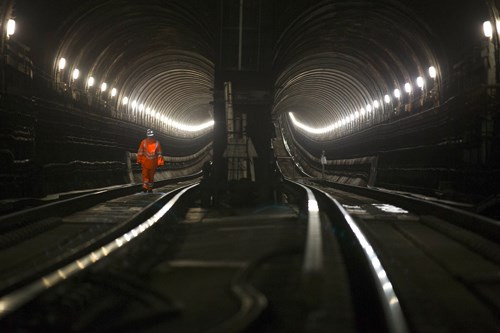
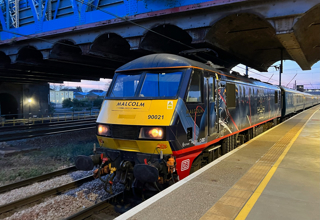
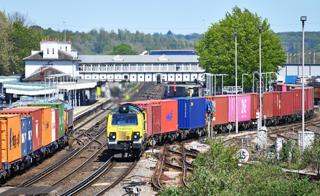
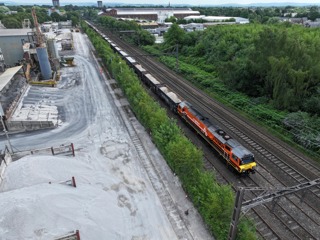

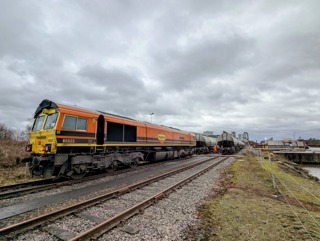










Login to comment
Comments
No comments have been made yet.